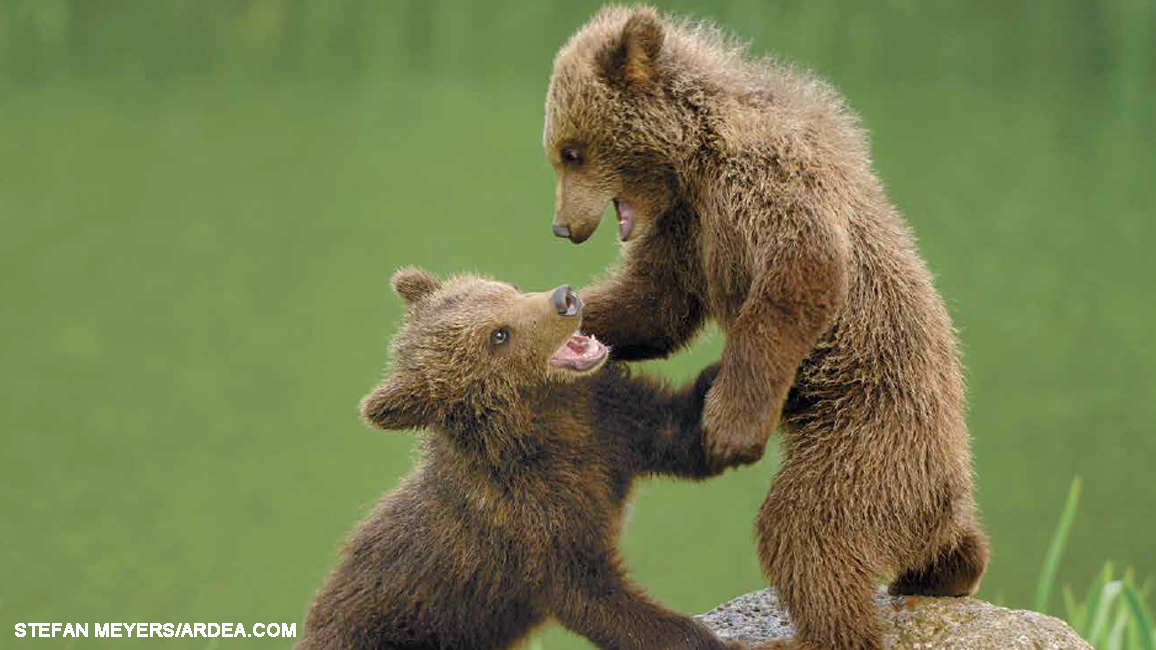
Brothers and Sisters
By Kate HofmannGreat pals? Or royal pains? Brothers and sisters can be both—in the animal world as well as in yours!

Do you have brothers or sisters? If so, you have something in common with many wild creatures, from owls to bears to spiders. And if you don’t have brothers or sisters (also called siblings), there are animal families like yours, too.
Some animals have no siblings. Some have just a few, and others have too many to count. Some siblings get along, and others don’t. Some spend their whole lives together, and others never even meet. Read on for a peek at brothers and sisters throughout the animal world.
VIDEO: WATCH SOME BEAR CUBS IN ACTION!

HOW MANY?
Pack of Possums
Opossum babies grow up with a heap of brothers and sisters. An opossum mom has a litter of seven, eight, or nine babies at once. As soon as they can hold on, the brothers and sisters pile on top of Mom and ride piggyback. Imagine stuffing that many human siblings in a minivan—do you think they’d squabble?
Baby opossums stay with their mom and each other for only three or four months. After that, Mom will have a new litter of little ones to look after.
Only Child
A baby humpback whale can weigh more than 2,000 pounds at birth. That’s one big baby! And that’s why the calf is an “only child.” One is plenty for Mom to give birth to, feed, and take care of. Whales—as well as other large animals such as elephants, seals, and rhinos—are almost always born one at a time. A whale mom may have more babies later, but usually the next one doesn’t come along until the first is on its own. So, the siblings grow up alone—even though they’re not “only children” in the same way as human kids with no brothers or sisters.
Adoption Option
Some “siblings” aren’t even related. For example, cowbird moms lay eggs in the nests of other birds. The cowbird egg looks different from the other eggs, and the “adopted” cowbird chick is usually bigger and pushier than its siblings. But the parents treat all the kids alike—even as the hungry cowbird eats more than its fair share of the food they bring!

FOR HOW LONG?
We’re Outta Here!
Baby seahorses have a whole crowd of brothers and sisters—as many as 2,000! Mom lays eggs in a pouch on Dad’s belly. Inside, the babies hatch and grow for several weeks. Then Dad squeezes them out of the pouch, and off they all go to live on their own.
Safety in Numbers
Not all underwater brothers and sisters go their separate ways, though. Many kinds of tadpoles stick close together after they hatch. Here’s why: A single tadpole is easy pickings for a hungry predator. But when it’s surrounded by many siblings, it’s much less likely to be the one that is eaten. After tadpoles become frogs, they will go off on their own.
Sibling Nibbling
Black widow spiders aren’t exactly family types. Hundreds of babies hatch together, but the stronger ones quickly devour their weaker brothers and sisters. Only a few of the siblings survive to grow up.
Sister Act
In an elephant family, females stick together for life. Brothers leave at around the age of 12, but sisters stay with their herd. They help take care of their younger siblings and the other calves in the group, protecting them from predators and helping them as they feed and bathe. It’s a group of sisters, mothers, daughters, aunts, and nieces, all led by one of the older females.
Now you’ve met animal siblings—big, small, and in between. And you’ve seen that some wild brothers and sisters seem a lot like human ones. Others are very different. Which of these animal families is most like yours?
















